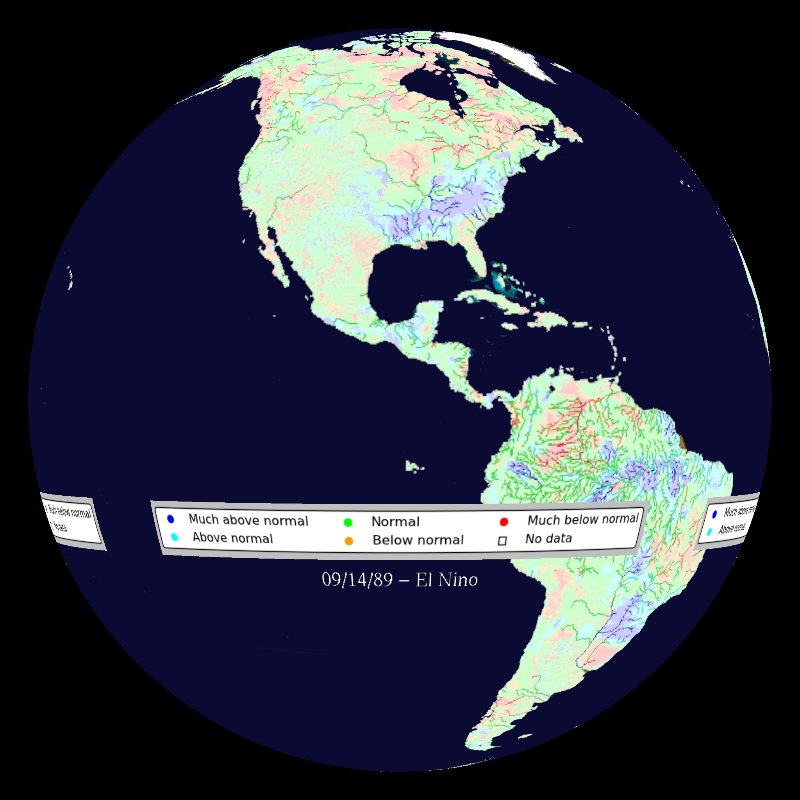A Closer Look at El Nino & La Nina

Details
Permalink to Details- Added to the Catalog
- Available for
- SOS
- Categories
- Land: Live Programs
- Water: Live Programs
Description
Permalink to DescriptionEl Niño and La Niña are phases of a naturally occurring climate cycle called El Niño/Southern Oscillation.ENSO involves large-scale changes in sea-surface temperature across the eastern tropical Pacific. Warmer ocean surface temperatures occur in the eastern tropical Pacific during El Niño. During La Niña, ocean surface temperatures here are cooler. Changes in ocean temperature lead to atmospheric changes, which impact the weather. Changes in the ocean & atmosphere can also have major impacts on the economy.
A look at river discharge, where greater precipitation causes greater discharge, for La Niña of 1988 and El Niño of 1989, shows that global conditions are not always what we would expect - some regions are distinctly wet or dry as we would expect and others are not as easy to predict or distinguish.
What we expect to see during typical cycles:
Permalink to What we expect to see during typical cycles:During El Niño, the winter conditions tend to be:
Permalink to During El Niño, the winter conditions tend to be:- Generally wetter & cooler in the U.S.
- Warmer in the Pacific Northwest
- Warmer & wetter in the equatorial Pacific
- Drier and warmer in parts of southern Africa
- Drier & warmer in Southeast Asia
El Niño summers are:
Permalink to El Niño summers are:- Drier in southeast Asia and Australia
- Wetter in the middle of the Pacific
- Warmer on the west coast of South America
La Niña winters are usually the opposite of El Niño winters:
Permalink to La Niña winters are usually the opposite of El Niño winters:- The southern U.S. is dry and warm
- The equatorial Pacific is dry & cool
- Southeast Asia is wetter